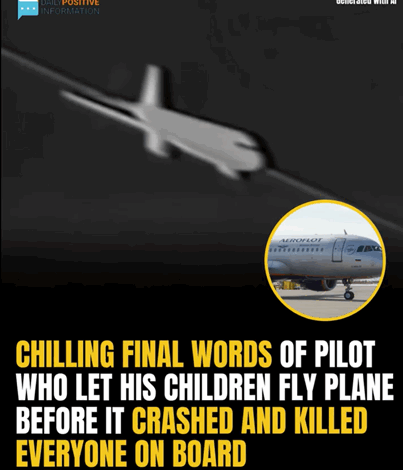Tragic Plane Crash: Pilot’s Haunting Last Message Before Disaster Struck After Letting His Kids Take Control

What was intended as a memorable experience for Relief Captain Yaroslav Vladimirovich Kudrinsky and his children became one of the most devastating aviation disasters in Russian history. On the night of March 23, 1994, Aeroflot Flight 593, flying from Moscow to Hong Kong, crashed in the remote Kuznetsk Alatau mountains in Russia’s Kemerovo Oblast. All 75 passengers and crew perished, marking the incident as a catastrophic and preventable loss.
The flight was operated by a highly experienced crew, including Captain Andrew Viktorovich Danilov, First Officer Igor Vasilyevich Piskaryov, and Relief Captain Yaroslav Kudrinsky. With thousands of flight hours collectively, the crew’s professionalism initially reassured passengers and airline officials. However, the disaster revealed the critical importance of strict cockpit discipline and adherence to safety protocols.
Kudrinsky had brought his two children aboard: 13-year-old Yana and 15-year-old Eldar. The flight was a rare chance for the children to travel abroad and experience their father’s professional world firsthand. In a well-meaning gesture, he allowed them into the cockpit. What began as a joyful moment became a breach of strict airline regulations prohibiting non-crew members, particularly minors, from handling controls during flight.
Believing the autopilot ensured safety, the crew permitted Yana to sit in her father’s seat, pretending to “fly” the aircraft under supervision. Soon after, Eldar took the controls and, in his curiosity, began moving the control stick. Unintentionally, his actions disengaged the autopilot. The aircraft shifted from automated to manual control after Eldar applied over 10 kilograms of force on the controls for more than 30 seconds. A warning light briefly indicated the autopilot’s disengagement, but the signal went unnoticed amid the unusual cockpit activity.
Once the autopilot was off, the plane’s stability declined. It began banking left, and the pilots did not immediately recognize the shift. Kudrinsky urgently instructed Eldar to leave the controls, repeatedly shouting: “Eldar, get away. Go to the back! You see the danger, don’t you? Go away!” Despite these warnings, the aircraft continued to lose proper attitude control.
In their efforts to recover, the pilots overcorrected, causing the plane to climb steeply and ultimately stall. The aircraft lost lift and entered an uncontrollable spin. The crew’s attempts to regain control were hindered by the rapid altitude loss and high-stress conditions.
At 12:58 AM, Flight 593 crashed into the rugged Kuznetsk Alatau mountains, instantly killing all aboard. The remote crash site complicated rescue and investigation, but authorities initiated a thorough inquiry into the causes of the disaster.
Initially, Russian aviation officials and Aeroflot suggested mechanical failure as a cause, denying pilot error. Investigators reviewed the aircraft’s flight data recorder and cockpit voice recorder, revealing the sequence of events with painful clarity.
The investigation ultimately concluded that human error was the primary cause, compounded by violations of safety protocols. Allowing the children in the cockpit and letting them manipulate the controls breached strict regulations. The pilots also failed to notice the autopilot disengagement warning and did not correct abnormal flight behavior in time. These factors combined to produce the catastrophic loss of control and crash.
The disaster highlighted the grave risks of complacency and protocol breaches in commercial aviation. Airlines worldwide reviewed cockpit security policies, emphasizing strict prohibitions on unauthorized personnel in the cockpit and reinforcing crew resource management to ensure rapid response to anomalies.